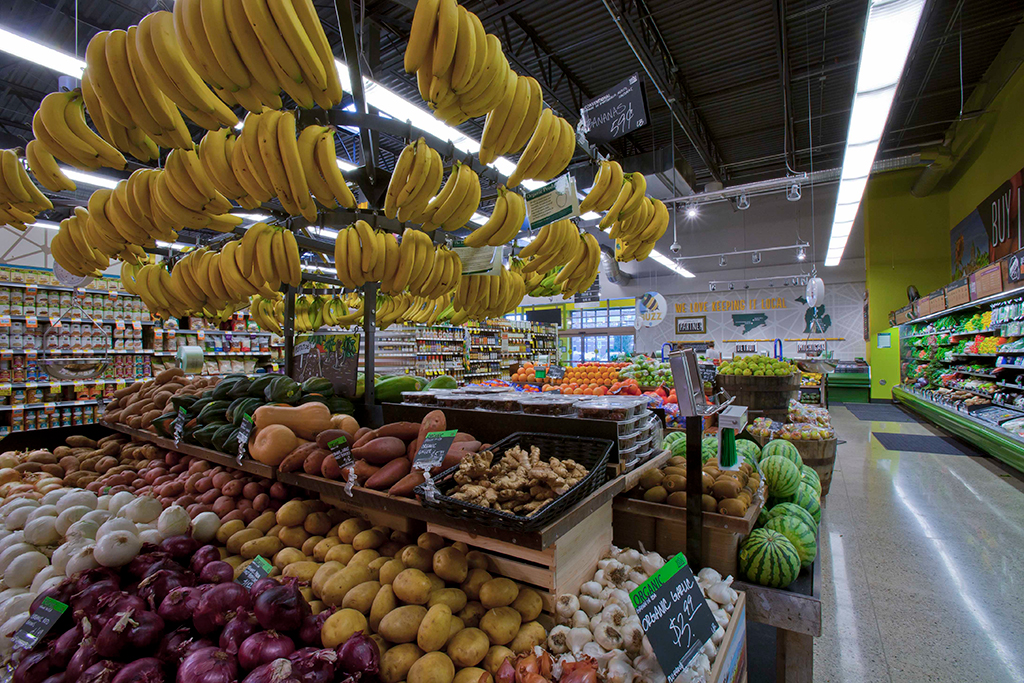Big-Box Retailers’ Profits Surge as Pandemic Marches On

Walmart and Target reported record sales in the second quarter, driven by the convenience of one-stop shopping and their e-commerce operations.
In the early days of the pandemic, when grocery stores in the United States ran low on staples like toilet paper, people flocked to Walmart and Target to stock up. Five months later, as the number of coronavirus cases remains high, shoppers continue to buy from the big-box retailers in record amounts.
On Wednesday, Target reported the greatest percentage increase in quarterly sales in the company’s history. Walmart, which reported earnings on Tuesday, doubled its e-commerce sales. Home Depot’s sales increased more than 23 percent in this year’s second quarter. Wayfair reported earlier that its revenue was up roughly 80 percent year over year.
The success of those retailers can be attributed, in part, to their one-stop shopping advantage — both in person and online. It allows budget-conscious shoppers to pick up groceries, clothing, electronics, and home goods at the same time.
“In a pandemic, you don’t want to make multiple stops, you want to go to one place that is safe and convenient,” said Andy Mantis, head of data insights for the research firm 1010Data.
The pandemic has been devastating for the broader retail industry, with name-brand companies like Neiman Marcus, J. Crew, J.C. Penney and the owner of Men’s Wearhouse among those that have filed for bankruptcy in recent months. But monthly retail sales — after plummeting in March and April — have returned to the level they were at in February, fed in large part by behemoths like Amazon, Walmart and Target.
Walmart had strong demand for groceries, as well as for home and sporting goods. With people still largely stuck at home, Target’s electronics sales surged. Home Depot and Lowe’s drew crowds of people eager to finally tackle home improvement projects, with sales of hard surface flooring and interior lighting doing especially well.
“These big-box retailers are just perfectly positioned,” said Andrew Lipsman, an analyst at the data analytics firm eMarketer. “They have basically every tailwind at their back.”
For shoppers who wanted to completely avoid in-store shopping, big box retailers already had robust e-commerce platforms in place that allowed them to immediately start providing customers with so-called contactless shopping options, including curbside pickup and home delivery of things as diverse as groceries and furniture.
“Throughout this crisis, we have deepened our relationship with American consumers and introduced millions of them to our digital fulfillment services,” Target’s chief executive, Brian Cornell, said on an earnings call.
These advantages have won the stores new customers who might have previously preferred local grocers or hardware stores. Target added 10 million new digital customers in the first half of this year.
“It’s creating a massive opportunity, and if they are smart about it, this is going to help them retain those customers and continue to fuel their growth,” Mr. Mantis of 1010Data said.
Whether the retailers are able to sustain this growth will depend partly on how much disposable income their customers have. The stimulus payments and $600 weekly increase to unemployment benefits meant that millions of unemployed Americans were still able to buy necessities at stores like Walmart and Target, and in some cases a few extras, like toys to keep their children entertained at home. But with the $600 payments now stopped, and Congress still deadlocked on an additional aid package, some shoppers may have to tighten their belts.
In contrast, many people who have held onto their jobs and are now working from home full time have found themselves with more discretionary income than ever before. People who might have spent money on dining out, travel or event tickets are now redirecting those funds toward home improvement projects like buying a hot tub, building a home movie theater, redecorating a home office or building a guest cottage.
“Sales were driven by a consumer focus on the home, core repair and maintenance activities, and wallet share shift away from other discretionary spending,” Lowe’s chief executive, Marvin Ellison, said on Wednesday in an earnings release.
The recent sales growth of big box stores is good for the economy, keeping supply chains strong and helping ensure job security for the millions of people the retailers employ, said Matt Williams, managing partner at the Brand Federation, a consulting firm.
“For the economy, it means consumers are still spending, maybe not at the same volumes and on the same things as in the past, but they’re still spending,” Mr. Williams said. “That’s encouraging.”
But it comes with a cost, particularly for small businesses, whose survival has long been threatened by the increasing dominance of corporate retailers.
While large retailers like Walmart and Target were deemed essential businesses when the pandemic hit, many small stores were not, and they were forced to close their doors, leading to lost revenue and wasted inventory. Many small businesses did not have a robust e-commerce business before the virus struck, and they have lost customers while they struggle to adapt.
People are also less likely to start their own businesses during this period, unable to muster enough capital or fearful that their businesses will fail in such uncertain times, said Ryan Gellis, founding partner of RMG Media, a digital commerce agency.
“It’s part of why a pandemic is a tragedy,” Mr. Gellis said. “It is not just the loss of life, but the loss of people’s ability to run their own businesses and pursue that American dream.”
Wait! Don’t miss out on the latest insights
Sign up for Saschse Construction’s
e-newsletter below!
Featured Topics
BUSINESS
ECONOMY + EMPLOYMENT
National

